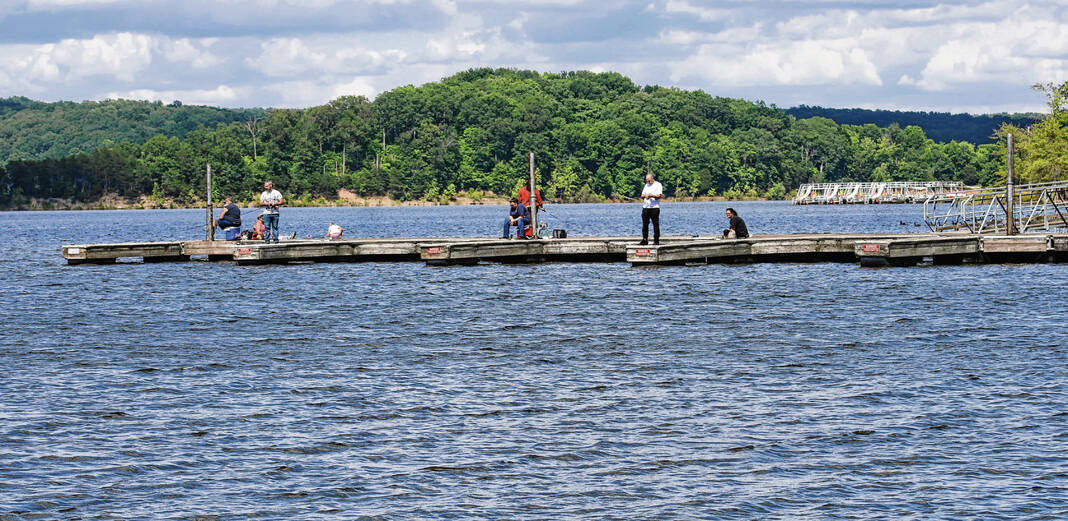
On a sunny day people fish from a pier at Monroe Lake’s Cutright access.
Lew Freedman | For The Tribune
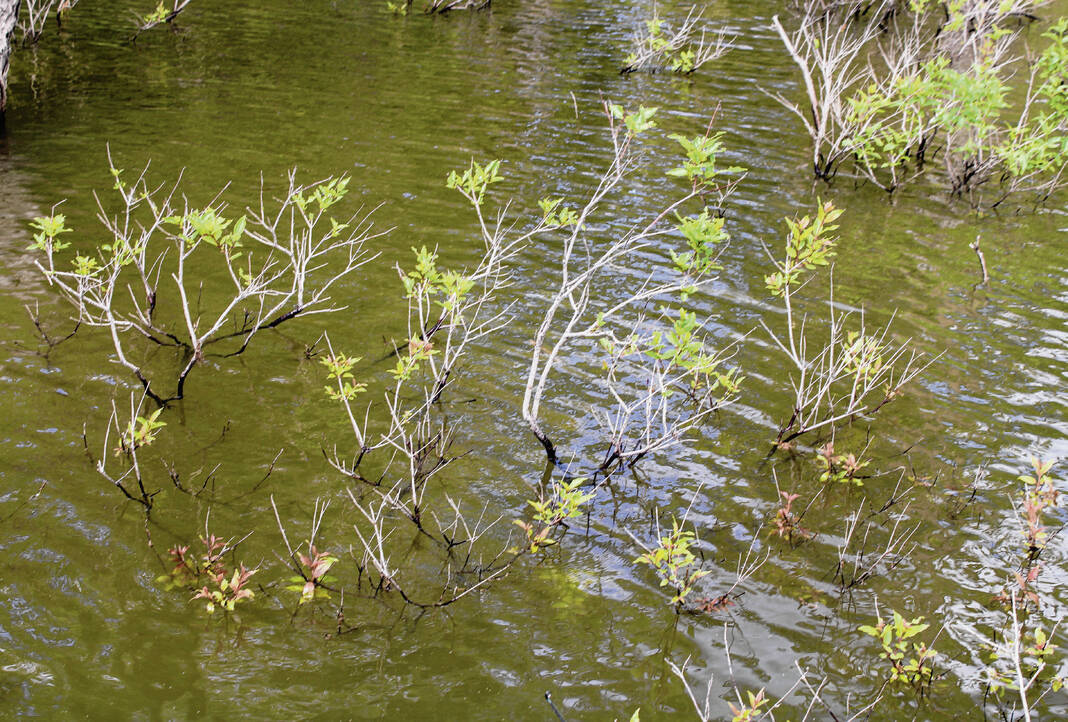
Fish liked hiding in weeds like these, resulting in hooking vegetation instead.
Lew Freedman | For The Tribune
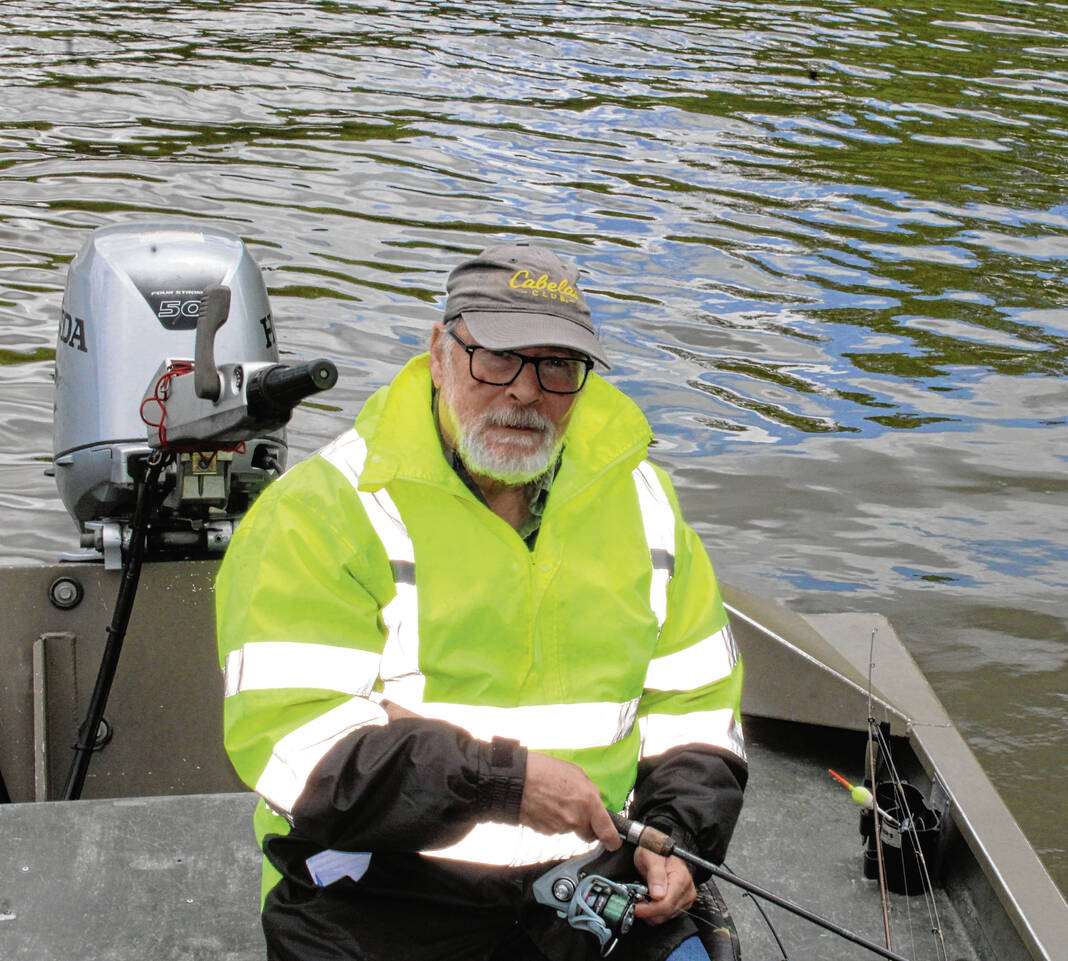
Fishing in the breeze, reporter Lew Freedman;slicker may have scared away fish.
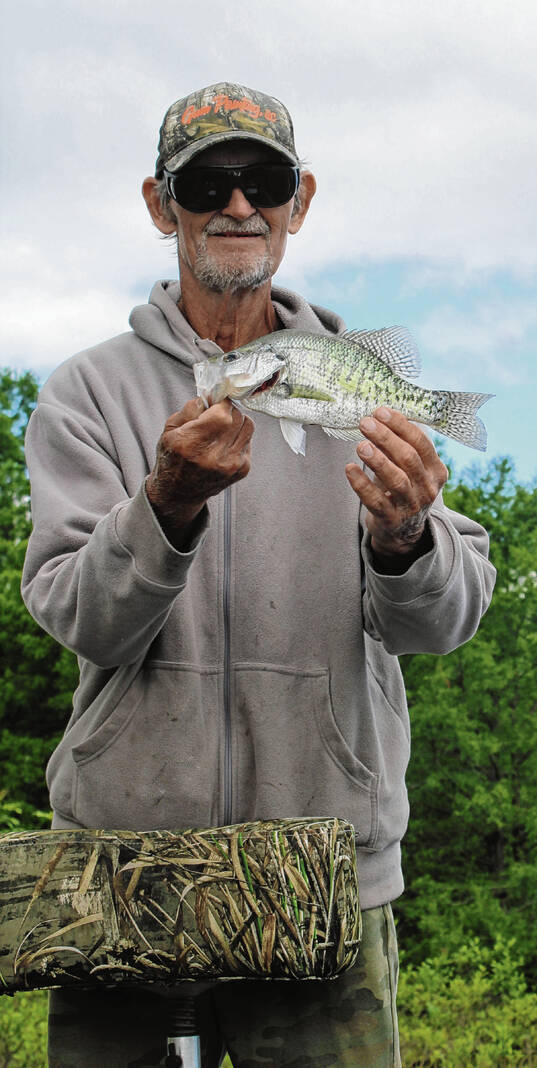
Tom Todd caught numerous small fish.
Lew Freedman | For The Tribune

The Cutright access at Monroe Lake.
Lew Freedman | For The Tribune
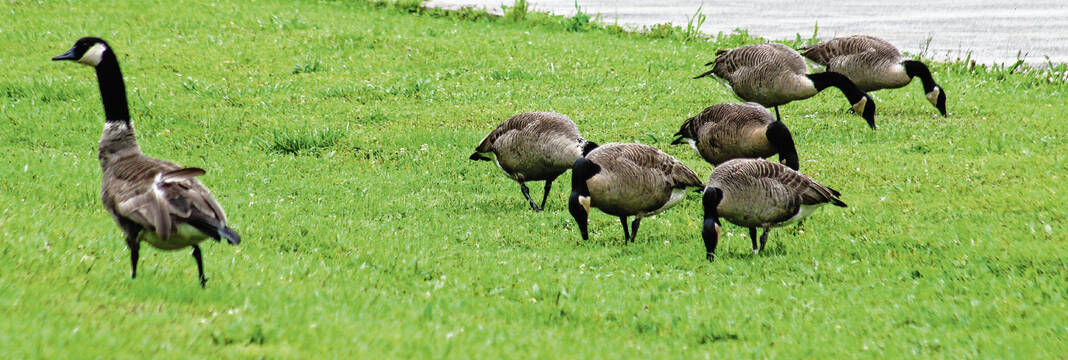
Geese hung out on land as part of the local wildlife on site.
Lew Freedman | For The Tribune

Geese swimming just offshore at Monroe Lake
Lew Freedman | For The Tribune
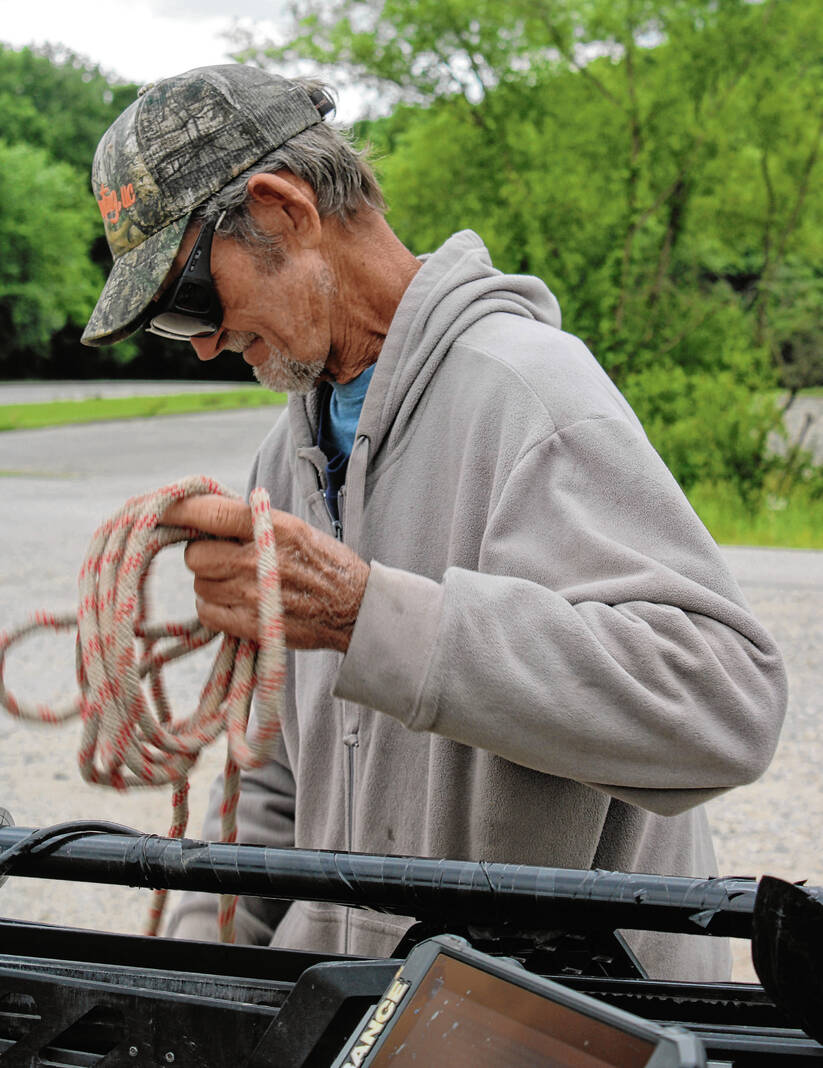
Holding on to the boat as it launches and peeling off rope.
Lew Freedman | For The Tribune
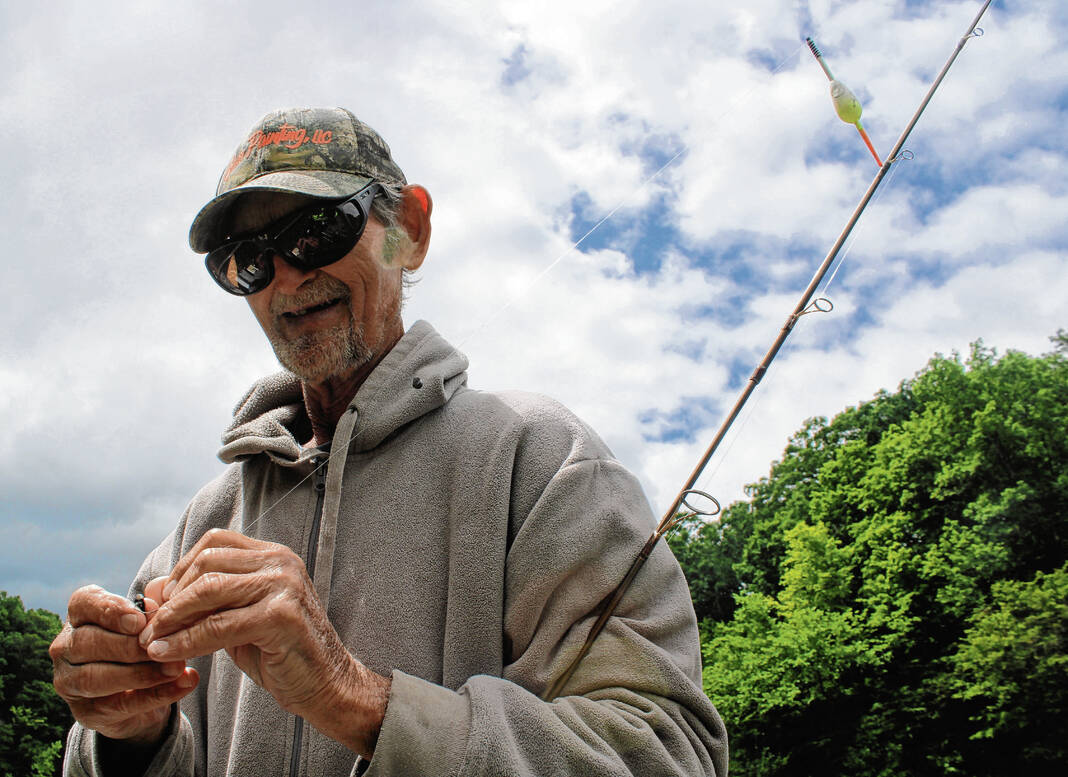
Guide Tom Todd baits a hook
Lew Freedman | For The Tribune
BLOOMINGTON — The fish was a beauty. By the standards of the usual Indiana smallmouth bass, the photographs of the just-about-8-1/4-pounder either dangling from angler Rex Remington’s fingers horizontally, or cradled in his arms vertically, caused eyes to pop cartoonishly wide.
He caught that in Monroe Lake? Wow. Yep, 8.23 pounds, a new state record for the species, the state Department of Natural Resources certified the March 3 catch.
This fish was a fatso, appearing to spend the winter gorging itself at the Golden Corral buffet before opening its mouth once too often for its own good. The old Hoosier record, set 32 years ago, was 7 ¼ pounds, caught in LaGrange County.
As soon as I read about the big fish being caught in a lake where I periodically drop in, I contacted fishing partner-guide Tom Todd and basically said, “We’ve got to get us one of them. If he can do it, why can’t we? Let’s go break the record.”
Tom, who knows much more about these things than I do, even if I was kidding, went along with the gag. “Sure,” he said.
I figured all of the people like Outdoor Life, Field and Stream, and the DNR, who publicized Remington’s catch, would throw a little love our way if just two months later, in late May, we broke the new record.
Monroe Lake is a 10,750-acre body of water, technically on the outskirts of Bloomington. It is more commonly fished for other species than the greenish-skinned big boy Remington caught. More typically, anglers catch white crappie, channel catfish, largemouth bass and a mix of others. Although smallmouth bass are on the list as available, they are not as populous.
Tom, of Tom’s Guide Service, is 70 and has spent a lifetime fishing not only Monroe, but numerous waterways of Central and Southern Indiana. Many state anglers were surprised the record was captured at Monroe. In his decades fishing here, Tom catalogued his smallmouth success this way: “I’ve caught maybe 10.”
I hadn’t been giddy over the odds of fooling a state record smallmouth into taking a leap into the 18-foot Alumacraft on this sunny, off-and-on breezy day of 70 degrees, anyway. Ratcheting down my expectations, I said, “I just want to catch fish of any kind.”
Tom had the compromise answer to the situation. “You never know, we might catch a state record crappie.”
At the Cutright access, there were 15 trucks with empty trailers parked together representing boats on the water. None were in sight as we launched, and only one was seen all day. Monroe is large enough to accommodate fishermen who don’t fight over the same fish.
We motored to a cove Tom knew well where largemouth bass, crappie and catfish all congregated. It was the United Nations of fish sharing the water, giving peace a chance with their co-mingling.
The water temperature settled at 75 degrees after a coolish night and hopefully that was comfortable enough for the fish. With the sun frequently hiding behind clouds, in some areas the water looked very dark.
We trolled in a small area for a half hour. Tom caught a couple of small crappie and I caught one. They were all released. The action was slow-paced.
“There have been fish there for two weeks,” he said. “I don’t know why they don’t take the bait. They just sit there and look at you.”
Using light fishing rods with eight-pound test line, we started with minnows for bait and then switched to artificial lures. Over the next several hours, as we moved about, the sun grew stronger and glittered off the surface lightening the water’s appearance.
There had been considerable recent rain and Monroe was at high water level, with some usually dry land flooded. Some vegetation poked above water and the fish liked playing hide-and-seek in these weeds. Those wily fish could camouflage themselves amidst the greenery. So, when we cast, we were as likely to hook branches and leaves as fish.
Under story-telling of anything is possible, years ago, Tom was with friend Don Stalker fishing for crappie at Monroe and instead caught a world record yellow bass of 2 pounds, 4 ounces. They thought it was a white bass.
“We didn’t realize yellow bass get that big,” he said.
Still, the fish was weighed and it was discovered to be big for what it was. The record has since been eclipsed a couple of times, including by a catch at Morse Reservoir in Noblesville.
I caught a fish and facetiously asked Tom if it was a record smallmouth. “No,” he replied. It wasn’t even a smallmouth, but a white crappie. A record crappie? “No, he has to grow a little bit,”
A short while later Tom caught another fish. “There’s your yellow bass,” he said. Also, not record class.
We motored to favored spots, some of them protected coves, some of them points open to the wind. It was never a strong, cold wind, but enough to ripple the water’s surface. We watched a juvenile eagle fly past twice, a wood duck on the move, and a blue heron pause on shore.
Every once in a while, one of us (more often Tom), caught a crappie, but there were lengthy gaps between bites. The fish should have been hungry after the passage of a few hours.
“Are we still looking for the bass?” I teased. “We’re looking for anything, right now,” Tom said.
There are two species of fishermen in this world. Some people fish with skill and luck and with a casual flick of the wrist attract fish. Tom is in that classification. Some people are shunned by fish even when they seem to be placing hooks in the right place with their less-elegant casts. I am in that category.
It is not wise to broadcast this, but I am bad luck in a boat. Tom was studying his fish finder and pointed out how a school of shad were on the screen on the left and fish were suspended on the right. The fish weren’t eating. Why weren’t they scarfing up the shad? Tom was perplexed. I did not say it was no mystery. It was just because I was there.
Wherever we motored Tom caught some crappie. “Does he have any friends?” I asked when another was caught and released.
Tom brought in one crappie that was the big brother in the crowd, wider and heavier. “Is that a 10-pounder?” I asked. “You’re only about nine pounds off,” he said.
However, the one-pounder was a good-looking dude and Tom threw it in a cooler.
“I’m going to have that for supper,” he said.
Deep fried was how it would be cooked. Later, the fish would be rolled in yellow corn meal and then fried.
I hooked an itsy-bitsy teeny crappie that looked so small through the water’s surface just as I hauled it up, for a minute I thought it was a minnow. But no, it was really a fish. Simultaneously, Tom caught one. Two on at once, both almost miniature fish.
Tom’s catch of the day probably totaled 15 fish, me adding five.
A day that began with dreams of catching a really big smallmouth bass ended with the capture of two three-inch crappie.
Tom got dinner out of the one keeper and my seafood meal was shrimp and salmon at Red Lobster.
